
Spring 2019 NYU Travel Magazine
Staff Editors’ Letter


Editor-in-Chief
KRISTINA HAYHURST
Creative Director
SAM WINSLOW
Managing Editors
RAEVA SAYED
MARISA LOPEZ
Treasurer
MORGAN KUIN
Africa Editors
JOHNNIE YU
Asia Editors
BEVERLY TAN
Europe Editors
NASSIM BAHET
Latin America Editors
SONNET PRIETO
CRISTIANO ROTOLO
North America Editor
LAUREN GRUBER
Social Media Director
EMMA PETTIT
Layout Designers
BONNIE CHAN
LAURA MEASHER
BIANCA SPROUL
AINSLEY ROH
KATIE SUN
CLAIRE WANG
IRINA WIRJAN
RUBY WU
Illustrators
ANNIE ZHOU
CHARLIE DODGE
For NYU students, Manhattan can be a center of opportunity and an isolated island of introspection. The world is at our fingertips, but our diverse interactions remind us every day that this seemingly centric city is really just a starting point. The stories within this edition of Baedeker explore the many paths that lead away from Washington Square and into the rest of the world. From dancing with history in the Dominican Republic to evading death on the frozen lakes of Minnesota, these stories embody New York’s simultaneous global and individual identities. Alongside narrative, Baedeker also holds space for stories better told in visual form. For the past two issues, we have placed a renewed focus on curating high-quality photography and a consistent aesthetic. In the age of Instagram, it’s more important than ever to slow down, peel your eyes away from ever-present screens, and enjoy the natural beauty of our world. We hope Baedeker helps you do just that.
READ ONLINE AT nyubaedeker.com
Cover: Morocco (by Coco Wang). Poem by Beverly Tan.
Right: Vevey, Switzerland (by Coco Wang)
Baedeker
NYU Travel Magazine Spring 2019

3 Letter from the Editors 1 EDITORS Chai 2 JOHNNIE YU Morocco 4 COCO WANG Saving Elephants by Helping People 6 AMARI WEDDLE Florence, Italy 8 RAINEY JIN Brighton, England 10 COCO WANG Photo: Lisbon, Portugal 11 ALLEGRA MILANI India 12 RAEVA SAYED Photo: Havana, Cuba 13 NATALIA HABERG Ireland 14 IZZY TOLEDO Photo: Jerusalem, Israel 15 TOMER KEYSAR New Zealand 16 JOHNNIE YU Photo: Sydney, Australia 17 SARAH ECKER Galapagos Islands 18 LAUREN CHIRIBOGA Photo: Vevey, Switzerland 20 COCO WANG The Echoes of Reflection 22 CRISTIANO ROTOLO Palo Alto, California 24 SAM WINSLOW Cordoba, Spain 26 JILL VALDES Breaking the Silence 27 KRISTINA HAYHURST The Pages With Cool Architecture 28 E. CONKLIN & A. LETSON Culture Shock 30 GABRIELLA MATOS London: An Aesthetic Reflection 31 SONALI MATHUR Vietnam 32 CHRIS FELIX ¡Baile! It Starts With a Sway 34 VEDA KAMRA Endpaper 36 EDITORS
Contents
CHAI
by JOHNNIE YU
It was in middle school when I thought I wanted to become a filmmaker when I grew up. I watched a moving documentary at the student film festival back home in Shanghai called “Chai”—which is the Chinese character spraypainted on buildings after the government decides on demolishing in hopes of urbanization. I learned then how powerful and empowering visual storytelling is, especially with non-fiction. One person with a camera can now spark city-wide conversation about real urban issues. My filmmaking dream never became a reality, but one thing that I gained from that experience is that I now take a camera wherever I go, ready, or paranoid, to capture moments around me.
It was the end of high school when I was walking down the streets of one of Shanghai’s old districts

called Lao Xi Men, populated mainly by old locals and early settlers of Shanghai. On some buildings were a red circle, spray painted with the Chinese character “拆” and I had a flashback to the scenes of the documentary I had watched years ago. I recognize and empathize with both sides of the chai qian or urbanization debate, and historically, no one really has a say when the government decides it’s necessary. But nonetheless, we can still play a part in remembering this part of the city’s history. With a close friend of mine, Johanna, we took our cameras and set an afternoon aside to roam the alleyways of the district.
What struck us most was how different this part of Shanghai is to the life we are accustomed to. Growing up in an expat community, all we really experience

is the sheltered bubble that represents little of what Shanghai is. Even our nightlife revolved around the handful of bars or clubs that provide English service or serve a predominantly foreign population. For a while, we wondered through Lao Xi Men completely silent, reflecting on our own experience living in Shanghai, almost as if we were experiencing some form of culture shock. And without the need to express this verbally, I know Johanna was having the exact same thoughts as I was.
An hour or so into our expedition we were interrupted by an old lady who saw us with our cameras. You must be familiar with technology, she told me in Chinese, gesturing for me to follow her inside. It turns out her computer was frozen but it wasn’t something that turning-off-and-on couldn’t


solve, which I taught her how to do. She told us all about how her son is in college and her daughter is in boarding school as she radiated with motherly pride, but using technology is much harder without them, especially because sometimes they’re too busy to help her.
And I couldn’t help but wonder if this is what my parents were like when I, their only child, left for college some couple of thousand miles away.
5
Morocco
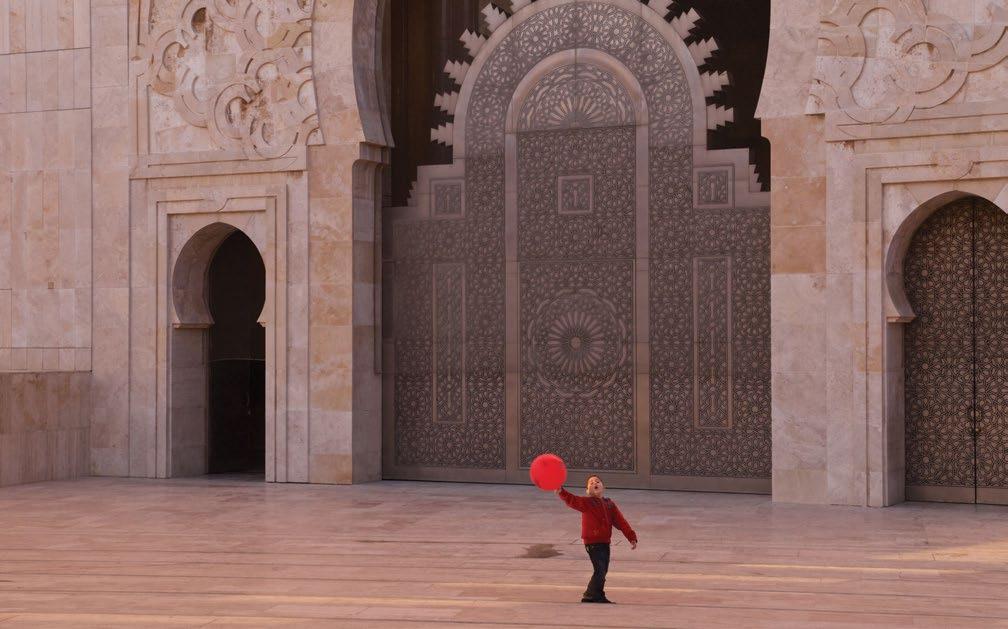
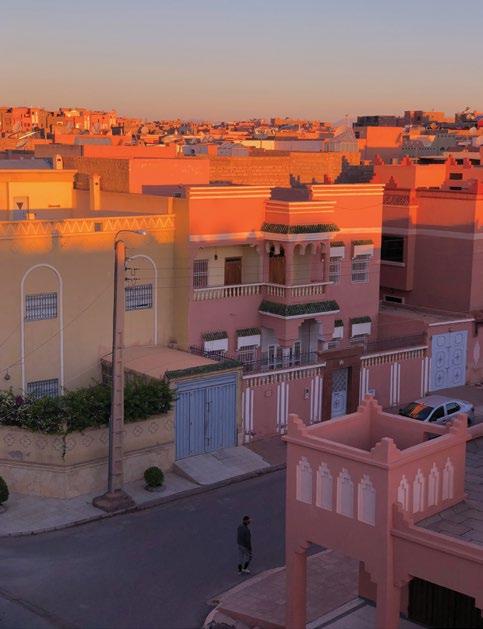
 by COCO WANG
by COCO WANG




Saving Elephants by Helping People
by AMARI WEDDLE
Sri Lanka is a country where both animals and people cohabit the same land— sharing resources, space, and everyday life. Interactions among elephants and humans aren’t harmonious, but rather consist of constant battles and devastating repercussions. This conflict causes approximately 250 elephant deaths a year, destroys farmers’ crops, and jeopardizes the safety of farmers and villagers. At this rate, the Sri Lankan elephant will become extinct in roughly 10 years. Behind the smiling faces of the farmers is pain and struggle masked by Buddhist philosophy. For the past three years, I have spent one-month during the summer at a research field house in Wasgamuwa National Park in rural Sri Lanka, where I established deep connections with the local community, taught English, and focused on resolving some of the challenges families in these rural communities face. Two lives, two different stories, but one unified goal. These are theirs.
THE POACHER
“I am afraid of them—the elephants,” translates Chinthaka. I am sitting in the field house with my two friends, Chinthaka and Siriya, who I now consider family. It has become a daily ritual drinking afternoon tea and exchanging

stories of our lives. Siriya was a farmer, like most Sri Lankans in the rural area of Wasgamuwa National Park. It was an honest job, but hard work — growing mung beans, rice, and papaya. It was the only life he knew. What he couldn’t predict was the influence elephants would have on not only his work, but his life. Countless times elephants raided his farm eating his crops, destroying his farmland and home, and in turn making him lose money. “It was the only solution I had to protect my family” he explains. His “solution”? Becoming a poacher. I could tell that Siriya was filled with hate and resentment towards these elephants; he poached for over twenty years “it was only fair,” they were ruining his livelihood. It wasn’t until he met Chinthaka that Siriya’s perspective began to change. Chinthaka introduced him to the Buddhist philosophy which focuses on acknowledging the suffering we endure and how to rid it from our lives. Through these teachings Siriya realized that these elephants mean no harm, but are just trying to survive, like him. Twenty years later, Siriya is no longer a poacher, but he lives in fear. Fear that the elephants are angry with him. Fear that each day they return to eat his crops they will also kill his family. Fear of his bad karma. Due to his
poaching past, he lives in constant fear of what may happen to him.
THE SCHOOLGIRL
Her grandfather was a farmer. Her father was a farmer. And her brother would most likely grow up to become a farmer too. She comes every afternoon to play volleyball, swim in the tank (a manmade body of water), and to work on her English. “Aliya” the word for elephant in Sinhalese was one word I would get all too familiar with. When teaching English in the local schools it was this word that worked as a link connecting the two of us and breaking our language barrier. “What’s your favorite animal?” “What sound does this animal make?” are common questions asked which unveiled a wide range of responses from the kids. The majority have disdain for the elephants and put them in the category of “bad”. Mariya,
Top: Siriya climbs Sunrise Rock every couple of weeks to meditate and reflect. He knows the path by heart and could lead us with his eyes closed. The sunrise symbolizes a new day and rebirth and climbing Sunrise Rock does just that. (Pussellayaya, Sri Lanka)
a thirteen-year-old girl, recounts the story of how her father was killed almost a year ago. It was during the middle of the night. Her family was asleep when they felt the ground to begin to shake and they knew that an elephant was on their property looking for food. Her father managed to get his wife and kids out, but it was too late for him. He went back to get his gun in order to scare the elephant away, but the damage was done. The walls of the house began to cave in and her father was killed by the impact and remained buried under the rubble. Although she doesn’t resent the elephants or blame them for her father’s death, a commonly held attitude among Sri Lankans, she does worry about her family’s future and their relationship with elephants as this is a common occurrence that can happen at any time.
It was stories like these that compelled the Sri Lankan Wildlife Conservation Society (SLWCS) to find a way to combat these conflicts that occurred between humans and elephants. In interviewing farmers, it became apparent that when elephants raided farms,
the one crop they didn’t touch was that of citrus fruit. Asian elephants differ from African elephants as they don’t like citrus fruits. We encouraged and taught farmers to plant citrus-based fruit trees around their homes to act as a natural deterrent to elephants. By strategically planting orange trees, the trees act almost as a natural barrier or fence. Now, when elephants come near the farm they do not actually harm the farmers’ crops or endanger families because the orange trees cause them to go elsewhere. Not only is this a “natural” holistic solution and is preferred over electric fences or poaching, but the orange trees are beneficial to farmers for another reason.
When the oranges are ripe they are sold to one of the biggest grocery stores in Sri Lanka, Food City, and create another source of income for the farmers.
Simultaneously I taught English in the local schools to provide the children with the necessary skills to pass the national English exam. By passing the exam, the children could pursue higher education, affording them more opportunities
and higher paying jobs, breaking the cycle of the lower class obtaining low-income jobs like farming.
So far, over twenty farmers have successfully implemented this strategy of planting citrus trees around their homes and farms and many families are learning the importance of higher education. 8,760 miles separate our two homes, our worlds are drastically different, but by working with the farmers and teaching English to their children, I truly understand SLWCS’ motto when they say we’re all about “saving elephants, by helping people.”
Left: The daughter of one of our orange tree recipients tending to her family’s farm. It is the dry season so she is checking her family’s land to make sure the water pump is supplying enough water to their crops and trees.

(Polonnaruwa, Sri Lanka)
Top: Clean water is rare to find in Sri Lanka as much of it is contaminated with bacteria. Kavishka hides his clean water in the tall grass so none of his friends find and steal it while they play volleyball after school.
(Pussellayaya, Sri Lanka)

Florence
by RAINEY JIN
8:42 AM

Ponte vecchio at eight Opens one jewelry shop Every five minutes.
“Turn on the lights, Warm orange-toned. And reveal the golden treasures.”
He awakens in mist, In a song of the musicians -- three lingering pigeons. Morning music Festival Only has twelve audiences.
Standing in the middle I see the sun to my left and the moon to my right. Good morning, Ponte Vecchio.
10:53 PM
Sunset brings him darkness like magic. Late night moment, fairy’s jewelry boxes are closed.
Light echoes in the crowd; Music shines through the gaps, Where lovers kissing, And love surging.
Buonanotte Gelato
Is the last thing he said.
Opposite page: A kayak on Arno River. I accidentally caught this symmetrical scene on Ponte Vecchio, the old bridge. When the weather is warm, there are always kayakers practicing along the river.
Left: Corridoio Vasariano
Built in five months, the Corridoio connects the Palazzo Vecchio with the Palazzo Pitti. Thousands of people pass through its high arches every day.

Above: It was rainy that day. The sea did not shine as expected, however, I felt warmth emerge when I lowered the highlights of this photo. Everything was calm and quiet like the horizon. (Nice, France)

11
Brighton, England
by COCO WANG
Top: On my way to the top of the white cliff, I encountered this mysterious yard. Someone lives in this little beach house halfway up the hill—a human presence was indicated by the curtains. A glossy vintage car. A lonely tree. This was a home at the end of the world.
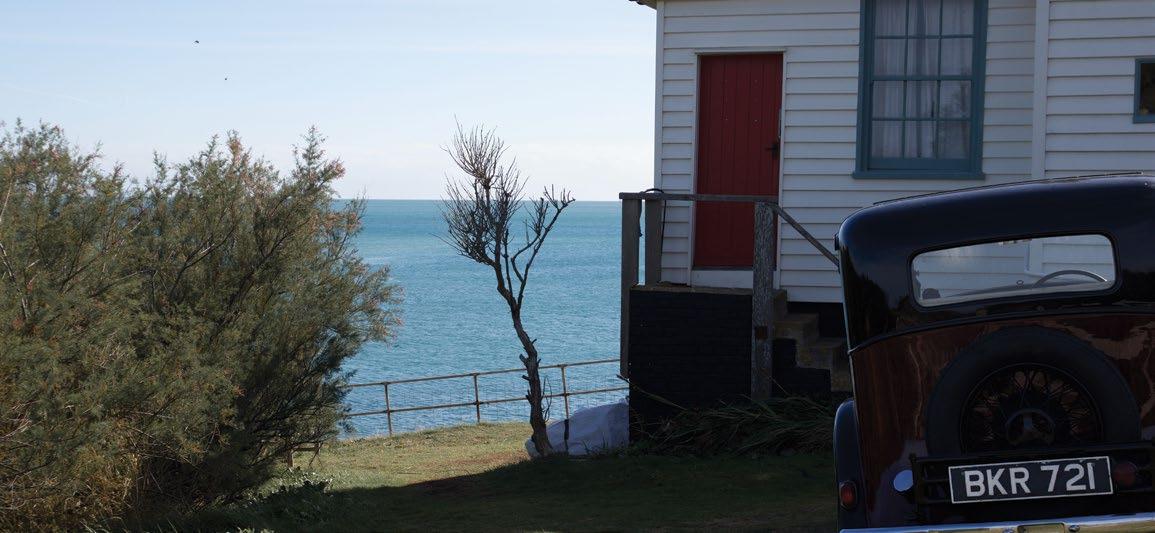
Above Left: Autumn by the sea is great. Your butt might hurt a little bit because Brighton Beach (not the one in Brooklyn!) is covered in stones, not sand. But the Brits won’t say a thing.

Above: A seagull squawks atop his perch.

Left: A moment of tranquility after a long walk to the white cliff.

Igreja Paroquial da Graça (Lisbon, Portugal)
I wandered alone into this small church next to one of the most popular miradouros (viewpoints) while my friends took pictures of the views. The azulejos (tiles) at the entrance of the church caught my eye. These traditional blue-and-white tile displays are influenced by porcelain from China.
 by ALLEGRA MILANI
by ALLEGRA MILANI
13
INDIA
by RAEVA SAYED
Top: I traveled through India alone a few summers ago, and Varanasi was one of the most complex places I visited. On my final day, as I was leaving, it began to pour. I ran down the winding narrow paths packed with people and animals alike. I stopped for a second in my rush to capture this vibrant moment. (Ghat in Varanasi, India)

Middle: I heard the monotonous chanting of the monks in the background and everyone whispering amongst themselves waiting for the official prayers to start. Meanwhile, an elderly woman rocked from side to side engrossed in her scripture. I wondered how long she had already been praying. (Woman in Dalai Lama Main Temple)

Bottom: After a long day walking around the city, I hopped on the back of a pedicab. I faced backwards towards the street for the whole ride. The brightcolored signs were placed to help compete with neighboring tea stalls offering the same items: kulcha and naan, two distinct varieties of Indian flatbread. (Streets of Amritsar, Punjab)

Havana, Cuba
A man cleans a crib on the rooftop of his home.
 by NATALIA HABERG
by NATALIA HABERG
15
Ireland


 by IZZY TOLEDO
Top: Located in a tourist spot overlooking the Ring of Kerry, a man playing the accordion sells handmade St. Brigid’s crosses. He claimed that his dog had reached the age of 26 by consuming a daily diet of fish and Guinness beer.
Above: In the town of Killarney, you can witness a sheepdog demonstration at the Kissane Sheep Farm.
Left: The Rock of Cashel, a magnificent 12th century castle located in County Tipperary.
by IZZY TOLEDO
Top: Located in a tourist spot overlooking the Ring of Kerry, a man playing the accordion sells handmade St. Brigid’s crosses. He claimed that his dog had reached the age of 26 by consuming a daily diet of fish and Guinness beer.
Above: In the town of Killarney, you can witness a sheepdog demonstration at the Kissane Sheep Farm.
Left: The Rock of Cashel, a magnificent 12th century castle located in County Tipperary.
Jerusalem, Israel
The Old City is divided into four quarters: Jewish, Muslim, Christian, and Armenian. Each is filled with its own rich culture and historical significance. This photo is taken in the Muslim quarter right by the Dome of the Rock where Prophet Muhammad is said to have ascended to heaven. The subjects in this photograph sell pita bread to tourists and local businesses.
 by TOMER KEYSAR
by TOMER KEYSAR
17
New Zealand
 by JOHNNIE YU
by JOHNNIE YU

 Above: Reunited with a high school friend, Alisha takes a stroll along the beach.
Left: A view from outside the supermarket as my friend went to purchase sunscreen for the summer sun.
Right: Kiwis take their brunches more seriously than most New Yorkers, and I was left in awe of their food and pastry displays.
Above: Reunited with a high school friend, Alisha takes a stroll along the beach.
Left: A view from outside the supermarket as my friend went to purchase sunscreen for the summer sun.
Right: Kiwis take their brunches more seriously than most New Yorkers, and I was left in awe of their food and pastry displays.
Sydney, Australia
Near the Jenolan Caves, I caught a sparkling body of water in the soft glow of my disposable camera.
 by SARAH ECKER
by SARAH ECKER
19
Galapagos Islands
by LAUREN CHIRIBOGA

 Above: Native Ecuadorian performing a time-honored ritual dance in traditional dress
Above: Native Ecuadorian performing a time-honored ritual dance in traditional dress
20
Right: The 30-foot statue of Charles Darwin accompanied by a sea lion on a cliff’s edge on La Isla San Cristóbal.
Being raised in and around New York City, I never thought I would have the opportunity to travel to the antithesis of the Big Apple. When I finally landed in Ecuador, the prospect finally felt real. However, that flight wasn’t even the one taking me to the most anticipated destination of my life. Just two days later, I would be landing on La Isla Isabela, the largest of the three Galapagos Islands I would visit in the next week. Grateful for the opportunity, I anxiously exited the plane into the thin, Ecuadorian air.
QUITO
A red line painted on the ground with a width of no more than half a foot, is what signaled the division of the Earth’s Northern and Southern Hemispheres. At the Equator National Park, I had one foot in the North, the other in the South, with only me and latitude 00°00’00” in the middle. At the equator line, we balanced eggs on a nail (which you can only do on the equator line) and learned how to shrink heads, an ancient Ecuadorian practice where severed heads are sacredly prepared for trophy, ritual, and trade purposes. Lastly, we saw a
performance of a traditional festival dance. Throughout Quito, we toured inside of a church and saw the closed gates that lead to the catacombs. Our guide informed us that the catacombs only open on “dia de los muertos.” An eerie location to spend a haunting holiday.
LA ISLA ISABELA
I hiked up Volcan Sierra Negra, surrounded by incredible views as we ascended to the volcanic crater. On this particularly humid day, only slivers of sun peeked through the hazy air. The crater of the volcano was a striking contrast from the green that had surrounded us for the entire hike. The sea of ash was still and lifeless, yet stunning. The other end of the crater was an entire six miles away.
Later that day we traveled to a desolate cove that transported us to another planet. I couldn’t wrap my head around the fact that we’d actually hiked a volcano just a few hours before. While distributing the snorkeling gear on a pier that couldn’t fit all seven of us, our path back to the island’s shore was blocked by sunbathers, an iguana, and a sea lion. We dove into the water. Iguanas perched on volcanic rock stared out at us as we swam through the lagoon. I floated above turtles and the brightest fish I’ve ever seen. Right before we left the water, a sea lion gave us a warning glare for getting too close to his home.
LA ISLA SANTA CRUZ
La Isla de Santa Cruz is where you go to channel your inner Darwin. The main features of the tour of the Charles Darwin Research Station included venerable tourtouses, the radiant orange and yellow

iguanas, and the labs which study evolution and environmental conservation. However, some hidden friends also came by to visit, including Darwin’s finches. These were the same finches for which he developed On the Origins of Species in 1859. They zipped by our heads as if we were natural inhabitants of the island, but I couldn’t help but think about their ancestors and how significant they were to the development of the theory of evolution.
LA ISLA SAN CRISTÓBAL
La Isla San Cristóbal is the island with the most vibrant “city” life. On the bustling main street, a bright parade prepared for the upcoming mayoral election. We began the visit with a hike to see the 30 foot statue of Charles Darwin and a seal on a cliff’s edge overlooking the electric blue ocean. We also swam at a beautiful beach during the sunset and went snorkeling in a cove where we saw a newborn sea lion. Looking around and seeing the range and freedom of the wildlife is what made the experience of the Galapagos islands so unique. Nowhere else on Earth can you get a more intimate experience with nature. The Galapagos islands revealed the impact people have on the environment around them. Santa Cruz doesn’t have any permanent residents, and still the small amount of pollution (air, noise, light, and trash) compared to New York City, is too much for the lives of the indigenous wildlife. So if you would like to visit the Galapagos islands, please be mindful of how the islands will react to your presence. As the islanders say, leave nothing except for footprints, and take nothing except for photos.
Above: one of the hundreds of finches in the trees surrounding us at any time
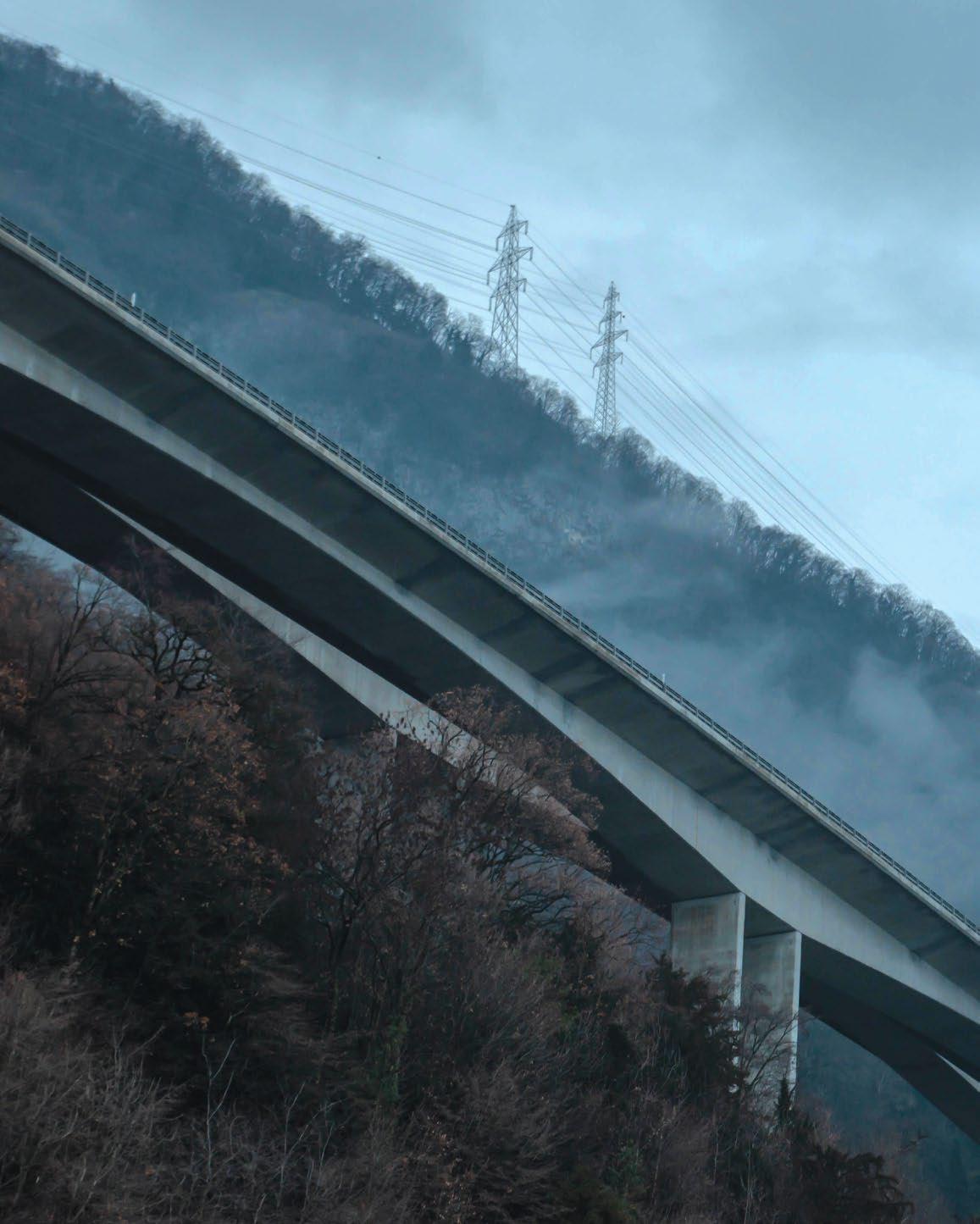
Vevey, Switzerland
The blue hour I’ve been missing. I went on a solo trip to Switzerland to officially wrap up my semester away in London. Vevey was my last stop before I went back to Shanghai to spend winter break with my family. I’m usually very sensitive to the beginning and the ending of sunset, but it was cloudy and chilly the whole day, so I stopped and took notice when the sky finally began to change color. As I strolled down the trail to catch my return train, I finally understood why it is hard for people to be in happy moods at high latitudes. We feel uncomfortable without sunlight, something we are so acquainted with as human beings. Still, I felt inexplicably peaceful when I spent time alone, analyzing such discomfort and unease. Now that I think of it, it was not at all a bad way to end my trip.
 by COCO WANG
by COCO WANG
23
The Echoes of Reflection
by CRISTIANO ROTOLO
A t NYU, I’ve changed my major more times than I can count. I’ve told my friends I’m going to be in congress, direct films, start a non-profit, write poetry, and enter the music industry. In the first month of 2019, I was about to become a “photojournalist.” I was going to Cuba for three weeks and using an iPhone as my main camera. The truth is, I don’t know what I’m doing. These passions and drives are real, were real, but I couldn’t sustain them. I got distracted. I felt incompetent. I jumped to the next ship, hoping that the next major, craft, or hobby could remain stable on the turbulent waves of early adulthood.
This constant instability and low self-esteem manifested itself into anxiety and depression. I wasn’t doing enough, I was going to be left behind. Time was moving on, faster and faster, as I stood still, either unwilling or unable to move. My friends were graduating, getting internships, and jobs. I was still desperately searching for who I was and what I was going to do. I was ashamed of the time I’d wastefully let pass by and ambitions I let fall to the wayside. I kept trying to reinvent myself. This is who I am now. This is who I’m going to be. To me, if I could confidently utter these statements and forget the wasted past, I’d regain authority over fleeting time.
People often say that Cuba, Havana specifically, is stuck in time. This simply isn’t true. Old Havana,
the part of town contrived for the tourists, is. The communist government that surmounted the corrupt, authoritarian government of Batista in the late 50s has begun to dip its toes into capitalist schemes to profit off of travelers. Pink and yellow 60’s Ford convertibles roll on cobblestone streets. Their vintage engines can be heard from Hemingway’s favorite bars. Live bands line the joint, and the distinguished rhythm of the clave, the heartbeat of Afro-Cuban music, reverberates around every street corner. Men twirl illustrious Cohiba cigars between their fingers, while the other hand grazes the thigh of girlfriends or wives: the embodiment of privileged, carefree living.
However, apart from behind the bar or driving the cars, the Cubans aren’t here. The profit made from Havana being an established tourist destination, doesn’t profit them. Most of the Cubans don’t drink mojitos or daiquiris. They sip rum, smoke hand rolled cigars, and twirl loved ones as they dance on the cobblestone streets to the echoes of the bands that escape through open doorways. Unlike my clunky hips, theirs can actually handle the tempo of the music.
The shops in Old Havana are colored with sun-stained shades of pastels. But this isn’t where most of the Cubans live. They live off the main roads, where speckled bone-white gets added to the palette. Most of the walls in the residential areas are merely reminiscent of the pastel shades that are ubiquitously Cuban. The bright colors were tagged by revolutionary phrases such as “Patria o Muerte” which translates to “Homeland or Death,” a popular utterance by Castro, Guevara, and
the mass of Cuban revolutionaries. However, recently, these markings of spray paint have been vandalized and derisive portraits of these revolutionary figures stand in their place. The white spray paint that celebrated “Socialismo” has faded with the pastel paint of these houses. Additionally, on most blocks, you’ll see houses, store fronts, and entire apartment buildings that have taken their final bow. Brick and concrete rubble pour onto the street, the decrepit structure hangs by a thread, reminding you that people used to live there. Where have they gone?
I remember a walk we took through Central Havana. A woman sitting on the front steps of her house remarked at our cameras and warned us about being careful with our expensive equipment in her neighborhood. In broken Spanish, I told her that her house was beautiful. The turquoise may have begun to chip, exposing the pale greys and muddled whites beneath the paint, but it reminded me of the sea that surrounded the island. Turquoise waves with a rim of foam, that nestled the soul with a soothing reverberance as they surged into rocks and the concrete barrier of the Malecón before retreating to the horizon. The woman jumped up and invited us inside to take pictures. She showed off her Oshun altar, floral patterned furniture, and the Jose Marti bust that stood next to lit candles and pictures of a big family. The house felt warm.
The restaurants in Cuba weren’t the highlights of the trip, but you could get a meal for cheap. Six CUC for a grilled chicken entree, eight CUC for fish. If you were looking to save even more, you could go to the outdoor food mar-
kets that the residents shop at, but beware, your currency won’t work there. The communist government pays their citizens in pesos. For example, the government has sanctioned an average monthly salary of seven hundred pesos for Cuban doctors. However, one peso is roughly one twenty-fifth of the CUC that tourists exchange for at the airport. Essentially, if a doctor worked as a cab driver in the touristy areas (as many do on their days off), they’d earn their monthly salary in six rides. Furthermore, the difference in value between the tourist’s currency and the citizen’s currency allows you to buy a heaping basket of fruit, flowers, and pastries for the rough equivalent of a few dollars. There’s no fish though, sometimes not even chicken. Meat, that’s not pork, is only available when you can afford it and the government has decided to send it to the markets. However, it’s not the citizens that the government is worried about feeding.
Fortunately, our time in Cuba coincided with the Havana Jazz Festival. During the week of the festival, we saw and listened to countless rejuvenations of funk, salsa, rumba, and Afro-Cuban jazz. All of the venues had a Cuban line and a tourist line. The tourists normally had to pay fifteen CUC, the Cubans only had to pay a few pesos. Luckily, Noria, our Cuban TA, and her friends would help sneak us in as Cubans. The best concert I saw was Cimafunk (please listen to their song, “Me Voy” at your earliest convenience) at Pabellón Cuba. A show staged by a hypnotic, exuberant front man with an uproarious flat top who rocked the mic with the prowess of a young James Brown meets
Bruno Mars. The man with the flat-top and fabulous, psychedelic attire was backed by an eclectic mix of strings, keys, and drums. They surged electricity and groove into the thumping crowd. We congregated in a vacant concrete lot that had been transformed into a rollicking dancing space with local art being premiered in the back. No one pushed, we all gathered. Rum and beer were spilled on shoulders, and sips and cigarettes were offered for forgiveness. Strangers threw their arms around each other and hands were extended to offer you a spin. The entire crowd pulsated as one joyous, liberated heart beat.
Cuba isn’t “stuck in time.” It embodies time that has coalesced into a complicated, contradicting history. A history encumbered by slavery and colonial rule that has been liberated by rebellion, twice. A rebellion that promised an end to authoritarian rule, yet a Castro still remains in ultimate control of the state and government. The Congolese, Sudanese, and Yoruba traditions of the formerly enslaved can be heard and are extricated by the rhythm of the drums and strings. Yet, the invasive Spanish language has been forced on their tongues and their song.
However, these contradictions aren’t hypocrisies, they’re “multitudes.” The fancy, vintage convertibles, pastel houses, and mojitos does not erase the current poverty and corruption. However, to bask in grandeur or the contrived aesthetics of the tourist-laden areas, is to only scratch the surface of what this country can offer.
Their history is bloody and turbulent, but it’s also filled with love and pride. The Cuban identity is speckled with bone white and a
bold royal blue that is as boundless as the sky, the sea, and the horizon. The people I met primarily wanted to invite me in, to experience just a taste of their reality and their history, so that they, the individual people, could decide what is paramount to the Cuban experience as opposed to the propagated image that is circulated by corrupt governments and faulty textbooks. This experience is one that is heard in their vivacious music, felt through dance, and seen in the prolific statues, local art, and living room displays.
Slavery and colonialism defined this island for centuries, yet now they stand for their rebellious spirit. The government instilled by the people after the Cuban Revolution in 1959, has breeded corruption and poverty, but their history that has shown brothers and sisters fighting together, has given them confidence and self-efficacy in the amelioration of their surroundings. As the government tries to silence their words and paralyze their actions, song and dance break through. They don’t deny their reality or their past, instead they want to show you their living room, how they dance, and the beautiful fruits and flowers that are abundant on this island. Stuck in the insecurity and turbulence of early adulthood, it’s easy to wish you could rewind time. The forsaken belief of wondering “what could have been?”
However, there are many blessings, self-realizations, and moments of growth in times of instability. If a country that has triumphed through two revolutions and is still working to find the right path forward can smile, dance, make art, and sing with strangers, why can’t I?
25
PALO ALTO, CALIFORNIA
by SAM WINSLOW
HOMECOMING. I NEVER WENT TO THE DANCE. WELL, I ALMOST DID, ONCE: DELANEY, IF YOU’RE READING THIS, SORRY FOR LEAVING A ROCK ON YOUR DESK. AN ASPHALT CHUNK WEIGHING DOWN A WHITE SHEET MARKED “YOU ROCK MY WORLD.” I MEAN, WOW, WHAT A PICK-UP LINE. C+ FOR EFFORT BUT MAYBE AN A– FOR BEING CRAZY ENOUGH TO DO IT. I CERTAINLY KNEW HOW TO SEE AN IDEA TO COMPLETION. MEMORIES LIKE THIS STAY WITH ME, BUT THEY DON’T HURT ME THE WAY THEY DID WHEN I WAS SIXTEEN. WHEN I TRAVEL BACK TO CALIFORNIA, THAT IS, WHEN I HEAD BACK HOME, MEMORIES RUSH INTO MY CONSCIENCE LIKE SAND FILLS IN A HOLE ON A PACIFIC BEACH. THE EDGES CRUMBLE INTO THE CENTER. EVERY CORNER YOU DRIVE PAST HAS A FIRST. MY FIRST KISS WAS A BLOCK AWAY FROM CHURCH. CALL IT A CATHOLIC SMOOCH. I REMEMBER PULLING UP SLOWLY TO A RED LIGHT AT THE CORNER OF CAMPUS DRIVE AND FOOTHILL, HOW THE SUN TURNED DEAD GRASS INTO GLITTERING GOLDEN THREADS. I LOOK IN THE REARVIEW MIRROR AND MY FRIEND IS NARRATING HIS ACID TRIP IN REAL TIME. HOW WAS IT, BRADY? I USED TO TAKE FOOTHILL TO GET TO SCHOOL, AND I’D SING CHANNEL ORANGE ON THE WAY THERE AND BLONDE ON THE WAY BACK. HOW I THOUGHT I COULD HIT THOSE FALSETTOS! DID I KNOW THAT THESE LITTLE MOMENTS WERE WHAT I’D LOOK BACK ON AND THINK, DAMN, THAT’S WHAT LIFE IS ABOUT? NOW I’M POSTED UP IN A TINY CONCRETE BOX CALLED NEW YORK, WHERE I DON’T HAVE QUITE AS MANY MEMORIES LIKE THESE YET, BUT I FEEL THEM COMING WITH EVERY PASSING DAY. SO MY ADVICE TO YOU, AS EDITOR IN CHIEF AND CREATIVE DIRECTOR OF A MAGAZINE THAT’S SUPPOSED TO TELL YOU WHERE TO GO NEXT: GO HOME. REMIND YOURSELF WHO YOU ARE. LOOK THROUGH THE MIRROR OF TIME, STARE INTO THE UNTIRED EYES OF YOUR SIXTEEN-YEAR-OLD ACNE-COVERED FACE AND SAY YEP, I’M STILL THE SAME PERSON, NO MATTER WHERE I GO, NO MATTER WHAT I SEE. THAT KNOWLEDGE DOESN’T LIMIT YOU. IT SETS YOU FREE.

THIS ISN’T MY CAR OR ANYTHING BUT I THOUGHT IT LOOKED COOL. IT HAPPENS TO BE PARKED NEXT TO THE WIDE OPEN FIELD CALLED KITE HILL, WHERE I WOULD’VE GONE TO TAKE CUTE FACEBOOK PICTURES BEFORE THE DANCE, HAD THE ROCK PROPOSAL WORKED.

27
One of the domes of the Great Mosque in Cordoba, Spain. The designs are completely bare, and frankly, it reminds me of one of those adult coloring books.
 by JILL VALDES
by JILL VALDES
Breaking the Silence
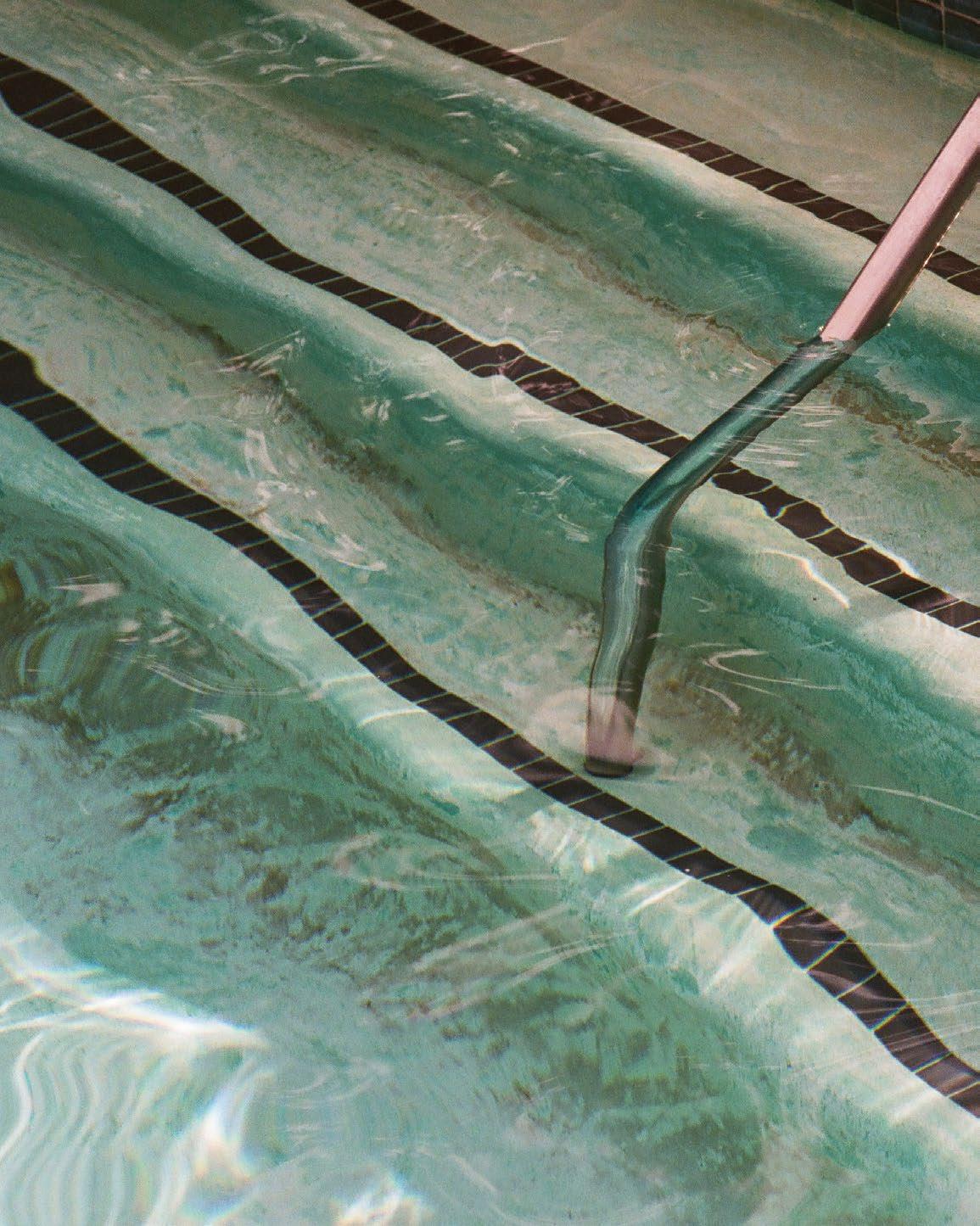
On a clear Minnesota night, the sun shines brightly through the atmosphere, scattering violet and blue light away from the eyes. One evening in December, I took Alex out on my family’s four wheeler, seeking the sunset. We rode onto the lake, as the first glimpse of burnt red lit the trees like fire between twigs. We rode through my lagoon to where the bay flows into a little alcove. This is a spot where two bodies meet; two different currents of water, moving underneath the ice, collide and become one. As we rode over this spot, on the surface, all Alex and I could see was a small rift. The stained-glass ice reflected the cloudless sky as it cracked underneath us. Each crack echoed through the silence of the empty lake. Standing up, we both tried to jump off before it all fell apart. As I stepped to the side, my foot went straight through the ice. It wasn’t cold. I searched for a grip as the rest of my body sunk into the freezing water. My hands, each clutching a piece of ice, ended up lost in the air. The green trees wavered and broke apart in the ice that surrounded my shoulders. The sunset was turning purple. I don’t know how long it was, but Alex appeared in front of me, grabbed my hands and pulled me out. I still wasn’t cold, but my hair was dripping with ice.
I turned my radio off while driving around the lake on my way home from the airport. The lake runs along the road like a smooth river. No snow on the frozen ice, no fishing houses in sight—the lake a crashing stream, held in time for a single moment. Stark blues fade to soft whites against the barren branches that surround the shores. I held my breath and waited for the waves and the music to begin again.
Story by KRISTINA HAYHURST
SAM WINSLOW
Photo: Three feet deep in the chlorine. I was able to pull myself out. (Palo Alto, California) by
Below: On the far left sits the Baptistry of St. John, in front of the Cathedral of Santa Maria del Fiore.

Opposite: Details in Tunisia.
 Left: Cathedral in Florence.
Photo by Anna Letson
Photo by Emily Conklin
Photos by Anna Letson
Left: Cathedral in Florence.
Photo by Anna Letson
Photo by Emily Conklin
Photos by Anna Letson
THE PAGES WITH COOL ARCHITECTURE


Culture Shock
by GABRIELLA MATOS
is what I say to picky eaters, only children, the sunburn-prone, and vegetarians. “You would hate it,” I always add. In an attempt to dissuade the aforementioned groups, I list the horrors of rural Brazil.
“There’s a lizard in my shower. I named him George. He doesn’t leave.” “There’s no cell service…at all.” “Everyone watches telenovelas all night—one living room, 25 people, zero English.”





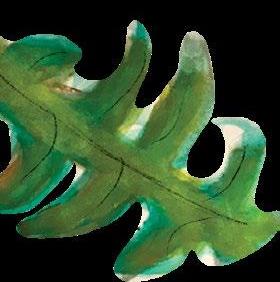

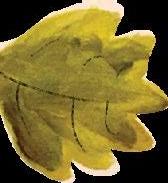




Yet, going to visit my family on that farm is the highlight of my year—I avidly consider it to be the most beautiful place on Earth. What I have tried to shield visitors from is not the incredible scenery, or the people I love dearly; rather, it’s the culture shock attached to them.
Guanhaes, Minas Gerais, Brazil—and the essentially untouched countryside beyond it—could really not be more different than Boston, MA, where all of my friends and I live. People interact differently and have different values. The population of Guanhaes and its surrounding farms is largely impoverished; the same cannot be said for Boston and its residents.
To take someone from one place and put them in the other causes shock. It can be startling because
it’s unfamiliar. Culture is so deeply rooted in ourselves that to experience another one is a big deal. The term “culture shock” has a negative connotation, but from what I have observed after bringing friends who grew up in New England, East Asia, and South Africa to rural, inland Brazil, it is a term to be celebrated.
Rose, Alisa, Nini and Jasmine all spent their first weeks in Brazil rather disoriented. The twenty-two hour trip combined with the jet lag exhausted them, the lack of cell service made them antsy and the language barrier made them anxious. They had to remember that every time they arrived or left a space with a person older than them, they’d have to say “Benca,” which is a respectful way to ask for a blessing. They would ask me what the thing in the beans that looked like a pig’s foot was; I would have to tell them that it was, in fact, a pig’s foot. Everything was wildly unfamiliar, and the strain of it all can be extremely taxing, and the language barrier, alienating. This, to me, is the lowest point of culture shock.
Once it was over, however, they reaped the true benefits of travel: personal growth and knowledge.
This was not a tourists experience, this was a cultural exchange between the visitors and the locals. Most amazing to me is that despite a complete language barrier, everyone found a unique and effective way to communicate with others.Everyone was curious to learn in depth about each other’s homes, families and educations.
For my friends, I know they consider those trips to be one of the best experiences of their lives, as many consider study abroads or other travels. They are still very much in touch with the people they met there, and they still don’t speak the same languages. Yet, they also remember the initial phase, because it was a bit traumatic. One of them told me, “I didn’t love it, but I wouldn’t ever take it back.” The rewards of culture shock, in this case, far outweighed the difficulties. In an effort to find something new, they first had to experience something unfamiliar, and I now try a little harder to bite my tongue before I discourage their visit. They will most definitely survive, and they’ll probably grow some, too.
“You wouldn’t survive”
LONDON AN AESTHETIC REFLECTION
by SONALI MATHUR
A s I walk past the bobbing heads of golden daffodils, the cherry blossom petals that colour the green grass pink, and the ducks that dive into algaed water for worms, I can’t help but agree with William Wordsworth that “a poet could not but be gay / in such jocund company”.

Around almost every corner is a line of plain trees; their flowers, enclosed in brown spiky balls, drop off their branches, dividing the sky into fragments as they dangle down precariously. Bees buzz amid sweetly scented honey-suckled shrubs as ladybugs rest on their rough leaves, and orange and white speckled butterflies lift off lavender Wisteria’s woeful branches. One need not visit Regent Park for beautiful sights, although its garden has the most magnificent roses: red, white, yellow, pink and orange, dotted around like sprinkles on a birthday cake.
I watch a colony of seagulls congregate to finesse an unassuming man’s fish and chips in Hyde Park,
while in the distance, ravens darken the dusky sky. In Hyde Park sits the Serpentine Lake, where tourists float around in paddle-boats, but it’s from the walkway at Southbank that you feel the powerful surge of water. The river Thames mirrors the grey skies above and the skyscrapers surrounding it. On windy days, the current is strong, and the river flows fast and furious into the distance, past the ever-present London eye.
The cosmopolitan city’s beauty extends past nature; its buildings are a unique combination of archaic and modern. St. Pancras station, St Paul’s Cathedral and the Parliament exemplify the Gothic Revival architecture of the early 18th century. The buildings have tall, castle-like towers, parapets, decorative arches over windows and doors, and finials, golden decorative finishings on the very top of the buildings that shoot out from them, piercing the skies.
The Neoclassical Edwardian style that was so popular in the mid-18th century is most promi-
nent in the grandeur of the Buckingham Palace’s white marble and stone columns, its triangular frieze and gleaming golden gates, and Queen Victoria memorial. There are other styles, each adding a new layer to the city, a pathway into its past.
The city is nothing without its people; Sherlock Holmes, Nicholas Nickleby, and Bridget Jones all strolled these streets once. Hundreds populate the areas around Covent Garden and Piccadilly Circus, along with black cabs and red double-decker buses that seem to turn onto the road from nowhere. Casinos and clubs are lit up with promises of good times and tiny theatres teem with excited enthusiasts and amused children on field trips. On Friday evenings the clang of beer glasses and laughter sound the pubs as people banter there after work. Most pubs shut at midnight; the city sleeps, only to awaken the next morning to the sounds of orange robins chirping good morning.
33
Vietnam
 by CHRIS FELIX
by CHRIS FELIX
Above: One morning in Sapa Valley I set off on my motorbike to find a village tucked away in the mountains. Unfortunately, the windy, mountainous roads of Sapa proved too hard for me to navigate and I found myself lost amongst the endless rice terraces of the valley and never made it to the village. I was able to snap this photo of a mother and daughter walking through their rice farm, on my failed expedition, so the day wasn’t a total disaster. (Sapa Valley, Vietnam)

35
¡BAILE! IT STARTS WITH A SWAY
by VEDA KAMRA
The merengue, the bachata, and the salsa are all dances you can easily find in the Dominican Republic. They each have their own styles, but all originate in Latin America.

The merengue, the national dance of the Dominican Republic, is a one-two step, which seems simple enough but is complicated by side-to-side hip thrusting. The turns, the arm placement, and the intuition of your partner make the dance swing naturally.

The bachata is a dance with contested origins, with a one-twothree step that can be found in the drums that accompany it. A tad more complicated, but also a breezy traveling dance that relies heavily on a good partner for a direction and follow-through.
The salsa, an originally Mexican dance, has a more complex step that travels from side to side and forward and backward. Perfecting the tucks and turns in salsa is just as hard as it looks.
The merengue, the bachata, and the salsa: across the Dominican, dancers bust these out on the daily.
To watch a good dancer dance is to feel yourself float into their sphere and jolt with the charge of their frenetic yet safe energy.
As I watched a dancer, Kim, glide through these steps with effort and without exhaustion, I felt her presence move throughout the corner of the room, as if she were her own spotlight.
The encasing audience would generally stir butterflies, but in a partner dance, the audience plays the chorus, magnifying the rhythm. The audience enhances, rather than overwhelms, this form of informal-formal dance. Claps, whistles, cheers, and shouts encourage, speed, and electrify the dancers, frequently encouraging others to join on the dance floor.
To dance is to reach a state of meditation. Between thinking hard and hardly thinking, one
taps into instinct. One accesses that synaptic connection between mind and body and soul. One glides through motions with fervor, without looking up down and around for audience. Rather than relying on thought, one trusts body to inform their movement.
Dancing with a partner, one focuses only on their body and that of their partners, such that dance sparks sensuality. The movement is not obscene or trite, it is eager. There is a choreographer, whether physically or mentally, but they come in the form of experience— like learning to cook from watching your mother in the kitchen, as a scholar of Dominican music described it. And, after seeing nu-
merous toddlers upstage twentyplus-year olds, I realize that it is from practice, within a culture of music and dance, that this skill develops. Intriguing as it is that music and dance (the substance of culture) is fervently tied to a nationalist mentality, the traditions appear natural—intrinsic, even— to Dominicans. But I would argue that we all have this capacity. Like any creative or plastic art, dance draws on knowledge to achieve a state of synergy.
Most magical is how these dances, particularly the merengue and bachata, are at once formal and informal. Through tradition, choreography has been passed down to create a standard of dance that is full of spirit and joy. But even if you don’t know the steps, you can participate informally with ease.


I love to dance, but I’m also cursed with three left feet: an unfortunate contradiction for those around me. But these dances swept me into motion. When I would hear music in a bar, a club, or just walking down the street, even my uncoordinated self felt invited and encouraged to dance along to the beat’s rallying current. It startes with a sway, and then you’re roped into a wave of bodies, colliding, but all that time stepping in rhythm, with a smile on your face.
I was spoiled with live music and sweet dance while in the DR. Divine drums, horns, and vocals reminded me that my life was far too short to let my three left feet stop me from chasing the rhythm. That meditative process of dance—allowing the choreographer to sound their count and then melting away into my own footsteps—it healed and naturalized my restlessly tapping soul.
Endpaper
Every issue, we are left with photographs too noteworthy to miss. Here are two.
A photo taken through the lens of a vintage film camera. In the middle of February, when spring was just beginning, I went to one of the biggest vintage markets in Florence. All kinds of old cameras and frames were being sold at the market.
 by RAINEY JIN
by RAINEY JIN
The largest indoor food market in Europe. It is considered inappropriate to take pictures of the food stands inside, so I took pictures of the stained glass windows instead.
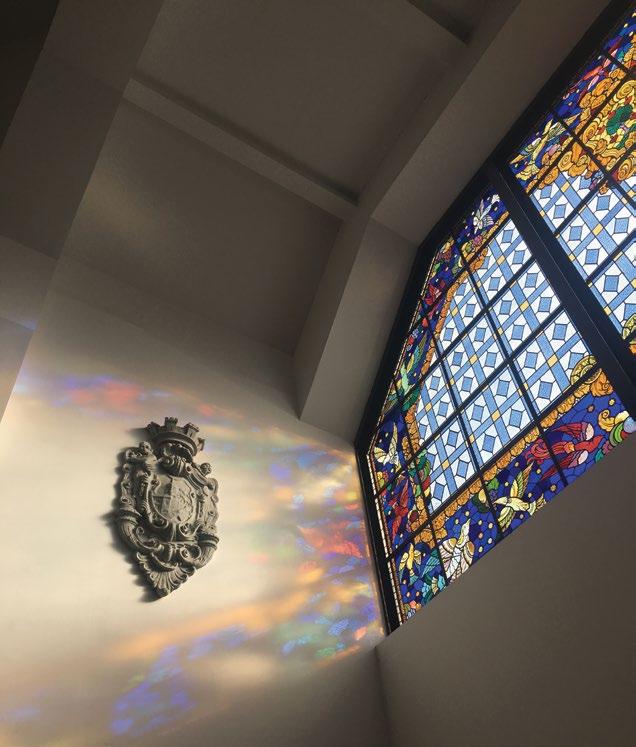 by ALLEGRA MILANI
by ALLEGRA MILANI
Can’t get enough?
Read online at nyubaedeker.com
STUDY I N SOME OF THE W ORLD’S MOST EXCITING C ITIES
Choose from over 350 courses in 6 0 subjects
Abu Dhabi, UAE
Accra, G hana

Berlin, Germany
Buen os A ires, Argentina
Florence, Italy
London , England
Madrid, Spain

Paris, France
Prague, C zech R epublic

Shanghai, China
Sydney, Australia

Tel Aviv, Israel
Washington , DC , US
NYU GLOBAL PROGRAMS Apply now at nyu.edu/global-programs
let’s pack up our books and run away to a place that we can’t call our own. read the stories of others, meet others living out their stories, become stories ourselves, and maybe one day be lucky enough to share them.



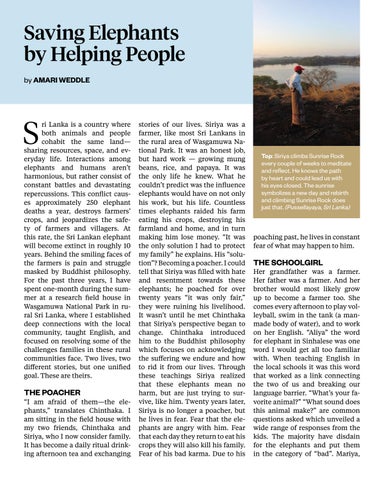







 by COCO WANG
by COCO WANG














 by ALLEGRA MILANI
by ALLEGRA MILANI



 by NATALIA HABERG
by NATALIA HABERG


 by IZZY TOLEDO
Top: Located in a tourist spot overlooking the Ring of Kerry, a man playing the accordion sells handmade St. Brigid’s crosses. He claimed that his dog had reached the age of 26 by consuming a daily diet of fish and Guinness beer.
Above: In the town of Killarney, you can witness a sheepdog demonstration at the Kissane Sheep Farm.
Left: The Rock of Cashel, a magnificent 12th century castle located in County Tipperary.
by IZZY TOLEDO
Top: Located in a tourist spot overlooking the Ring of Kerry, a man playing the accordion sells handmade St. Brigid’s crosses. He claimed that his dog had reached the age of 26 by consuming a daily diet of fish and Guinness beer.
Above: In the town of Killarney, you can witness a sheepdog demonstration at the Kissane Sheep Farm.
Left: The Rock of Cashel, a magnificent 12th century castle located in County Tipperary.
 by TOMER KEYSAR
by TOMER KEYSAR
 by JOHNNIE YU
by JOHNNIE YU

 Above: Reunited with a high school friend, Alisha takes a stroll along the beach.
Left: A view from outside the supermarket as my friend went to purchase sunscreen for the summer sun.
Right: Kiwis take their brunches more seriously than most New Yorkers, and I was left in awe of their food and pastry displays.
Above: Reunited with a high school friend, Alisha takes a stroll along the beach.
Left: A view from outside the supermarket as my friend went to purchase sunscreen for the summer sun.
Right: Kiwis take their brunches more seriously than most New Yorkers, and I was left in awe of their food and pastry displays.
 by SARAH ECKER
by SARAH ECKER

 Above: Native Ecuadorian performing a time-honored ritual dance in traditional dress
Above: Native Ecuadorian performing a time-honored ritual dance in traditional dress


 by COCO WANG
by COCO WANG


 by JILL VALDES
by JILL VALDES


 Left: Cathedral in Florence.
Photo by Anna Letson
Photo by Emily Conklin
Photos by Anna Letson
Left: Cathedral in Florence.
Photo by Anna Letson
Photo by Emily Conklin
Photos by Anna Letson















 by CHRIS FELIX
by CHRIS FELIX





 by RAINEY JIN
by RAINEY JIN
 by ALLEGRA MILANI
by ALLEGRA MILANI




